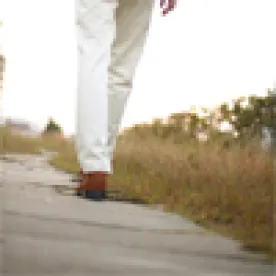According to the National Highway Traffic Safety Administration, in 2020, car wrecks involving pedestrians caused the deaths of 6,516 pedestrians, amounting to one death every 81 minutes.
North Carolina, where 228 pedestrian deaths occurred, ranked as the 14th state for pedestrian fatality rates in 2020.
Under North Carolina law, pedestrians typically have the right of way in a marked or unmarked crosswalk. However, pedestrians must obey the same traffic signals as drivers, such as not crossing during a red or yellow light. At times, despite following the law and being aware of their surroundings, pedestrians still get hit.
It is important to be aware of the steps you should take if you or a loved one are a pedestrian victim in a car wreck caused by someone else. These include:
-
Immediately seek the medical care you need.
-
When you obtain medical care, use your health insurance.
-
Document the entire process, including pictures of your injuries, medical records, medical expenses, time missed from work, and any other out-of-pocket expenses caused by the incident.
-
Speak to an attorney as early as possible after the incident.
Each of these steps can vary depending on your specific situation. This is why retaining counsel as quickly as possible is so important.
Compensatory and Punitive Damages
If a pedestrian is injured by an at-fault driver, compensatory damages are awarded for making an injured person "whole" under the law. While the payment of monetary compensation cannot fully replace what is lost, such payments are the best our civil legal system can do to "balance the harms" that occurred. An at-fault driver or their insurance company, if applicable, is responsible for paying these damages to the injured party.
"Economic" damages include past and present medical bills, as well as any other future medical costs. They also include lost wages and impaired earning capacity. If the victim was killed in a pedestrian accident, economic damages also include funeral expenses.
"Non-economic" damages compensate the injured party for pain and suffering, scarring or disfigurement, loss of use of a body party, and the permanency associated with any continuing injuries. The parties (or their insurance companies, if applicable), a judge, or a jury will determine a reasonable amount of compensation for these damages based on the specific facts of a case. If the pedestrian passes away because of their injuries, these noneconomic damages also include the losses of the pedestrian's estate beneficiaries (a spouse, children, or other family members, as applicable under North Carolina intestacy law).
"Punitive" damages may also be available if the at-fault driver's conduct was especially egregious, such as driving while under the influence of alcohol or drugs or excessive speeding. These are additional damages beyond compensatory damages and are meant to punish the at-fault driver for egregious conduct.
It is important to know, however, that North Carolina is a contributory negligence state. Therefore, if a jury finds the pedestrian even one percent at fault for the accident, the pedestrian cannot recover any compensation for their injuries. North Carolina is one of only a few states left in the United States that takes this approach.
Luckily, there are potential exceptions to application of contributory negligence if a pedestrian arguably was partially at-fault for the accident. These exceptions include the doctrine of "last clear chance" (a showing that the other driver had the last opportunity to avoid the accident), and, possibly, when the driver is "grossly negligent." The doctrine of last clear chance, in particular, often can apply in pedestrian accidents.
Finally, an important role for an injured pedestrian's attorney is identifying all of the potential insurance coverage available. The liability insurance for the at-fault vehicle will apply, as will any additional liability coverage held by the at-fault driver themselves (particularly if the driver is not the actual owner of the vehicle). If the at-fault driver was driving in the course and scope of their employment, a business liability policy might provide coverage. Also, many individuals don't realize that their own auto insurance can apply to help protect them—even when they were injured as a pedestrian. Indeed, uninsured coverage, underinsured coverage, and medical payments coverage may all be available to an injured pedestrian.





 />i
/>i

